Engineering Design Process Cycle Video
The engineering design process is a series of steps that guides engineering teams as we solve problems. The design process is iterative, meaning that we repeat the steps as many times as needed, making improvements along the way as we learn from failure and uncover new design possibilities to arrive at great solutions.
Overarching themes of the engineering design process are teamwork and design. Strengthen your students' understanding of open-ended design as you encourage them to work together to brainstorm new ideas, apply science and math concepts, test prototypes and analyze data—and aim for creativity and practicality in their solutions. Project-based learning engages learners of all ages—and fosters STEM literacy.
Browse all K-12 engineering design process curriculum
Ask: Identify the Need & Constraints
Engineers ask critical questions about what they want to create, whether it be a skyscraper, amusement park ride, bicycle or smartphone. These questions include: What is the problem to solve? What do we want to design? Who is it for? What do we want to accomplish? What are the project requirements? What are the limitations? What is our goal?
Research the Problem
This includes talking to people from many different backgrounds and specialties to assist with researching what products or solutions already exist, or what technologies might be adaptable to your needs.
Imagine: Develop Possible Solutions
You work with a team to brainstorm ideas and develop as many solutions as possible. This is the time to encourage wild ideas and defer judgment! Build on the ideas of others! Stay focused on topic, and have one conversation at a time! Remember: good design is all about teamwork! Help students understand the brainstorming guidelines by using the TE handout and two sizes of classroom posters.
Plan: Select a Promising Solution
For many teams this is the hardest step! Revisit the needs, constraints and research from the earlier steps, compare your best ideas, select one solution and make a plan to move forward with it.
Create: Build a Prototype
Building a prototype makes your ideas real! These early versions of the design solution help your team verify whether the design meets the original challenge objectives. Push yourself for creativity, imagination and excellence in design.
Test and Evaluate Prototype
Does it work? Does it solve the need? Communicate the results and get feedback. Analyze and talk about what works, what doesn't and what could be improved.
Improve: Redesign as Needed
Discuss how you could improve your solution. Make revisions. Draw new designs. Iterate your design to make your product the best it can be.
And now, REPEAT!
Check out our high school engineering design unit
En español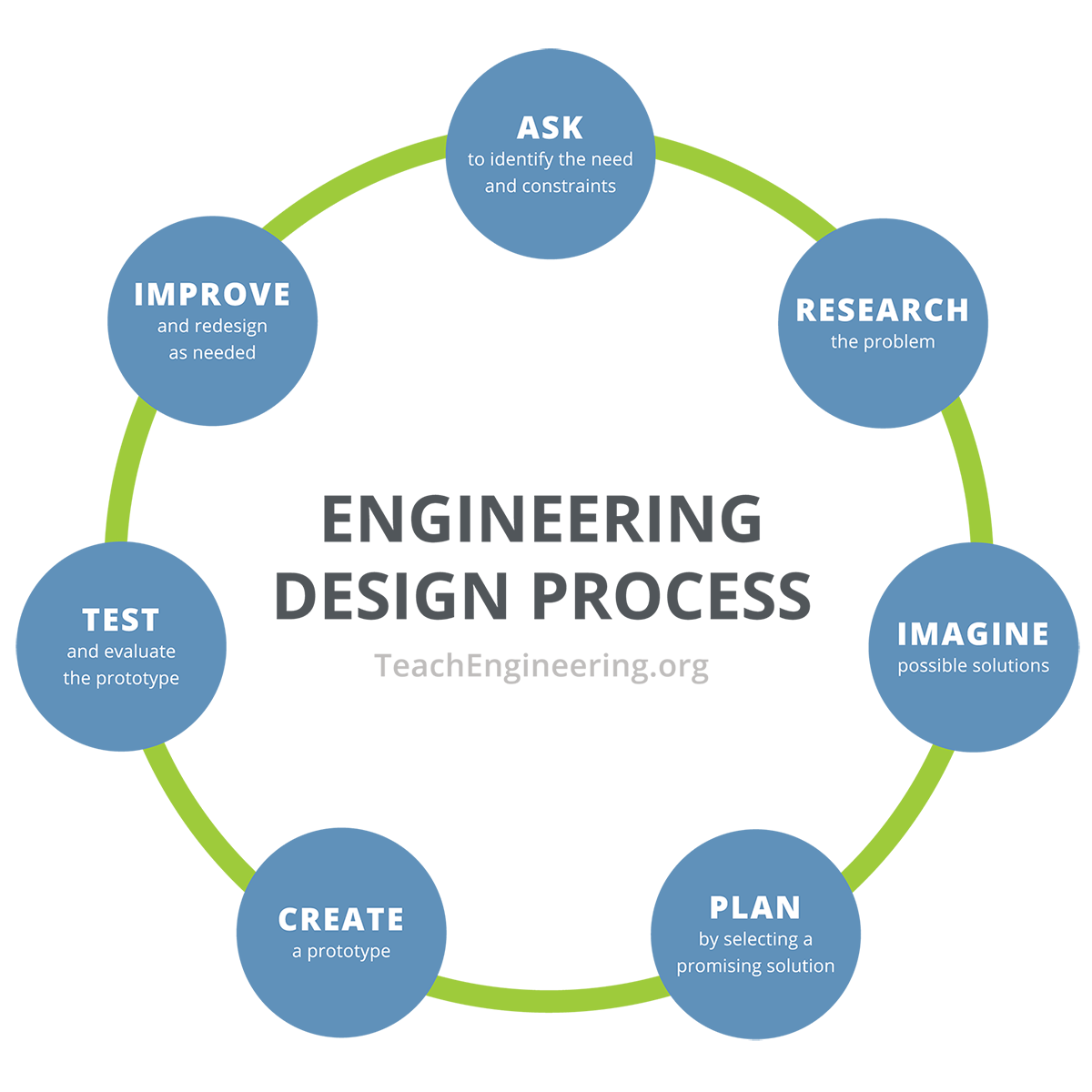

A Zombie Got My Leg Challenge: Making Makeshift Legs
Students experience the engineering design process as they design and construct lower-leg prostheses in response to a hypothetical zombie apocalypse scenario. Building on what they learned and researched in the associated lesson, they design and fabricate a replacement prosthetic limb using given sp...
Activity

Above-Ground Storage Tank Design Project
In this culminating activity, student groups act as engineering design teams to derive equations to determine the stability of specific above-ground storage tank scenarios with given tank specifications and liquid contents. With their flotation analyses completed and the stability determined, studen...
Activity

An Implementation of Steganography
Students apply the design process to the problem of hiding a message in a digital image using steganographic methods, a PictureEdit Java class, and API (provided as an attachment). They identify the problems and limitations associated with this task, brainstorm solutions, select a solution, and impl...
Activity

Android App Development
Students develop an app for an Android device that utilizes its built-in internal sensors, specifically the accelerometer. The goal of this activity is to teach programming design and skills using MIT's App Inventor software (free to download from the Internet) as the vehicle for learning.
Activity
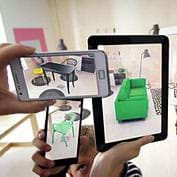
Augmented Reality Programming Challenge
Students explore augmented reality programs, including muscle and bone overlays and body tracking recording program, using Unity and Microsoft Visual Studio and develop ways to modify, enhance, and redesign the program to meet a particular real-world need.
Maker Challenge

Balloons
Students follow the steps of the engineering design process as they design and construct balloons for aerial surveillance. Applying their newfound knowledge, the young engineers build and test balloons that fly carrying small flip cameras that capture aerial images of their school.
Activity
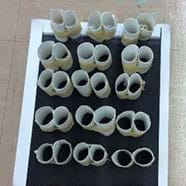
Bio-Engineering: Making and Testing Model Proteins
Students learn about human proteins, how their shapes are related to their functions and how DNA protein mutations result in diseases. Then, in a hypothetical engineering scenario, they use common classroom supplies to design and build their own structural, transport and defense protein models to he...
Activity

Boom Construction
Student teams design their own booms (bridges) and engage in a friendly competition with other teams to test their designs. Each team strives to design a boom that is light, can hold a certain amount of weight, and is affordable to build.
Activity

Build Your Own Night-Light with Arduino
Students use Arduino microcontrollers and light-sensitive resistors (photocells) to sense the ambient light levels in a room and turn LEDs on and off based on those readings. They are challenged to personalize their basic night-lights with the use of more LEDs, if/else statements and voltage divider...
Maker Challenge

Building Arduino Light Sculptures
Students gain practice in Arduino fundamentals as they design their own small-sized prototype light sculptures to light up a hypothetical courtyard. They program Arduino microcontrollers to control the lighting behavior of at least three light-emitting diodes (LEDs) to create imaginative light displ...
Maker Challenge

Can You Hear Me Now?
Students apply their knowledge of linear regression and design to solve a real-world challenge to create a better packing solution for shipping cell phones. They make composite material packaging containers using cardboard, fabric, plastic, paper and/or rubber bands to create four different-weight p...
Activity
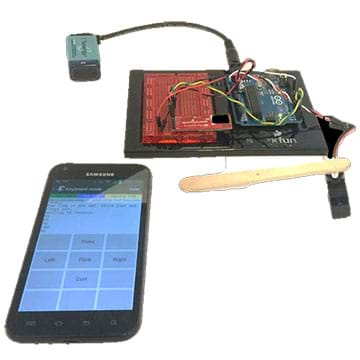
Control a Servo with Your Phone Using Bluetooth!
Students learn how to control an Arduino servo wirelessly using a simple phone application, Bluetooth module and an Android phone. This prepares them to wirelessly control their own projects.
Maker Challenge

Convertible Shoes: Function, Fashion and Design
Student teams design and build shoe prototypes that convert between high heels and athletic shoes. They apply their knowledge about the mechanics of walking and running as well as shoe design (as learned in the associated lesson) to design a multifunctional shoe that is both fashionable and function...
Activity

Create and Control a Popsicle Stick Finger Robot
Students use servos and flex sensors to make simple, one-jointed, finger robots. They use Arduino microcontrollers, create circuits and write code to read finger flexes and send angle info to servos. They explore the constrain, map and smoothing commands. Can teams combine fingers to create an entir...
Maker Challenge
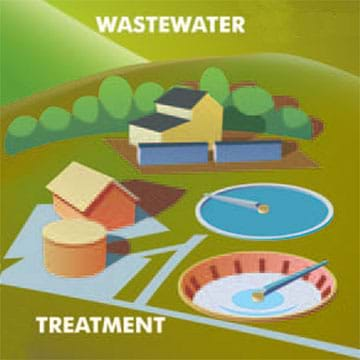
Creating Mini Wastewater Treatment Plants
Student teams design, construct, test and improve small working models of water treatment plant processes to filter out contaminants and reclaim resources from simulated wastewater. They keep to a materials budget and earn money from reclaimed materials. They conduct before/after water quality tests...
Activity

Design a Bicycle Helmet
Students are introduced to the biomechanical characteristics of helmets, and are challenged to incorporate them into designs for helmets used for various applications.
Activity
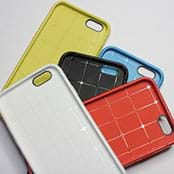
Design Your Own Nano-Polymer Smartphone Case
Students design and create their own nano-polymer smartphone case. Students choose their design, mix their nano-polymer (based in silicone) with starch and add coloring of their choice. While students think critically about their design, they embed strings in the nano-polymer material to optimize bo...
Maker Challenge

Designing a Robotic Surgical Device
Student teams create laparoscopic surgical robots designed to reduce the invasiveness of diagnosing endometriosis and investigate how the disease forms and spreads. Using a synthetic abdominal cavity simulator, students test and iterate their remotely controlled, camera-toting prototype devices, whi...
Activity

Designing an Elliptical Pool Table
Students learn about the mathematical characteristics and reflective property of ellipses by building their own elliptical-shaped pool tables. After a slide presentation introduction to ellipses, student "engineering teams" follow the steps of the engineering design process to develop prototypes, wh...
Activity

Does My Model Valve Stack up to the Real Thing?
Following the steps of the iterative engineering design process, student teams use what they learned in the previous lessons and activity in this unit to research and choose materials for their model heart valves and test those materials to compare their properties to known properties of real heart ...
Activity

Energy Storage Derby and Proposal
Students design, build and test small-sized vehicle prototypes that transfer various types of potential energy into motion. To complete the Go Public phase of the legacy cycle, students demonstrate their understanding of how potential energy may be transferred into kinetic energy.
Activity
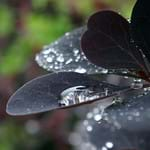
Engineering Self-Cleaning Hydrophobic Surfaces
Students explore how to modify surfaces such as wood or cotton fabric at the nanoscale. They create specialized materials with features such as waterproofing and stain resistance. The challenge starts with student teams identifying an intended user and developing scenarios for using their developed ...
Maker Challenge

Exploiting Polarization: Designing More Effective Sunglasses
Students apply their understanding of light polarization and attenuation to design, fabricate, test and refine their own prototype sunglasses that better reduce glare and lower light intensity compared to available sunglasses, and better protect eyes from UVA and UVB radiation. They meet the project...
Activity
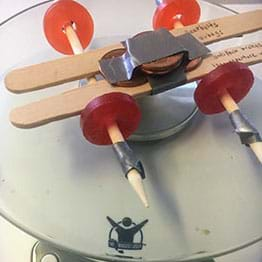

Flying T-Shirts
During this engineering design/build project, students investigate many different solutions to a problem. Their design challenge is to find a way to get school t-shirts up into the stands during home sporting events. They follow the steps of the engineering design process to design and build a usabl...
Activity
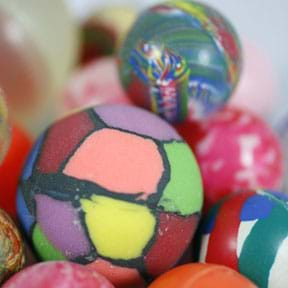
Having a Ball with Chemistry and Engineering
Students work as materials and chemical engineers to develop a bouncy ball using a select number of materials. They develop a plan of what materials they might need to design their product, and then create, test, and evaluate their bouncy ball.
Maker Challenge

Heat Flow and Diagrams Lab
Student pairs design, redesign and perform simple experiments to test the differences in thermal conductivity (heat flow) through different media (foil and thin steel). Then students create visual diagrams of their findings that can be understood by anyone with little background on the subject, appl...
Activity
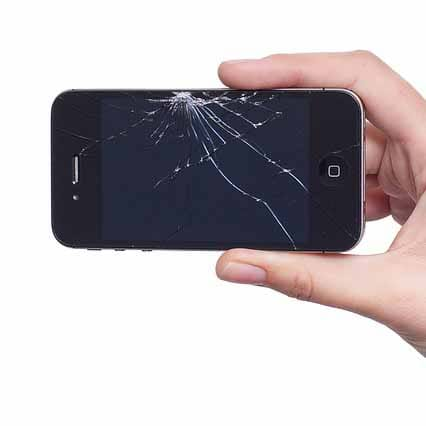
How to Design a Better Smartphone Case
Students follow the steps of the engineering design process to design an improved smartphone case. As if they are materials engineers, they evaluate how to build a smartphone case and study physical properties, chemical properties, and tessellations. They analyze materials, design and improve a prot...
Activity

Inquiry and Engineering: Gliders
Student teams design, build and test small-sized gliders to maximize flight distance and an aerodynamic ratio, applying their knowledge of fluid dynamics to its role in flight. Students experience the entire engineering design process, from brainstorming to CAD (or by hand) drafting, including resea...
Activity

Introduction to Arduino: Getting Connected and Blinking LEDs
Students learn how to connect Arduino microcontroller boards to computers and write basic code to blink LEDs. Provided steps guide students through the connection process, troubleshooting common pitfalls and writing their first Arduino programs. Then they independently write their own code to blink ...
Maker Challenge
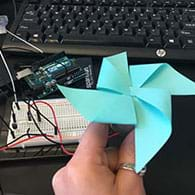
Make a Sticky-Note Fan with Arduino
Students control small electric motors using Arduino microcontrollers to make little spinning fans made with folded and glued paper sticky notes. They build basic circuits and modify code, before applying the principles to create their own more-complicated motor-controlled projects. Advanced project...
Maker Challenge
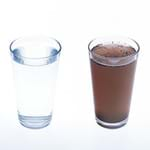
Making Dirty Water Drinkable!
Students create a water bottle from common materials used in purification tools that can clean dirty water as an inexpensive alternative to a modern filter. Students may iterate upon their design based off their experiment and the designs of their classmates after initial testing.
Maker Challenge
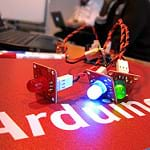
Making Sense of Sensors: Visualizing Sensor Data
Students take on the challenge of assembling a light sensor circuit in order to observe its readings using the Arduino Serial Monitor. They also create their own unique visualization through software called Processing. They learn how to use calibration and smoothing along the way to capture a better...
Maker Challenge

Measure the Milky Way with Stars
Students investigate Python and Jupyter Notebook to analyze real astronomical images in order to calculate the interstellar distance to a star cluster across the Milky Way from our own Solar System. They learn how to write Python code that runs in a Jupyter Notebook so they can determine the brightn...
Maker Challenge

Mouse Trap Racing in the Computer Age!
Students design, build and evaluate a spring-powered mouse trap racer. For evaluation, teams equip their racers with an intelligent brick from a LEGO© MINDSTORMS© EV3 Education Core Set and a HiTechnic© acceleration sensor.
Activity

Out-of-the Box: A Furniture Design + Engineering Challenge
Student teams follow the steps of the engineering design process as they design and build architecturally inspired cardboard furniture. Given a list of constraints, including limited fabrication materials and tools, groups research architectural styles, brainstorm ideas, make small-scale quick proto...
Maker Challenge

Power Your House with Wind
Students learn how engineers harness the energy of the wind to produce power by following the engineering design process as they prototype two types of wind turbines and test to see which works best. Students also learn how engineers decide where to place wind turbines, and the advantages and disadv...
Activity

Proof of Concept: Miracle Drug Encapsulation
Students experience the engineering design process as they design, fabricate, test and redesign their own methods for encapsulation of a (hypothetical) new miracle drug. The objective is to delay the drug release by a certain time and have a long release duration—patterned after the timed release re...
Activity

Pump It! Design-Build-Test Helpful Village Water Pumps
In this hands-on activity, student groups design, build, test and improve devices to pump water as if they were engineers helping a rural village meet their drinking water supply. Students keep track of their materials costs, and calculate power and cost efficiencies of the prototype pumps.
Activity

Redesigning a Classroom for the Visually Impaired
Students practice human-centered design by imagining, designing and prototyping a product to improve classroom accessibility for the visually impaired. Student teams follow the steps of the engineering design process to formulate their ideas, draw them by hand and using free, online Tinkercad softwa...
Activity

RGB Color Mixing
Students write Arduino code and use a "digital sandbox" to create new colors out of the three programming primary colors: green, red and blue. They develop their own functions, use them to make disco light shows, and vary the pattern and colors of their shows.
Maker Challenge

Shantytown Construction Redesign
Student teams each design, build and test a composite material for use as a concrete building block for shantytown use. The design challenge constraints include: using inexpensive and readily available materials, chemically resistant, physically durable, cost-effective and aesthetically pleasing. Th...
Activity
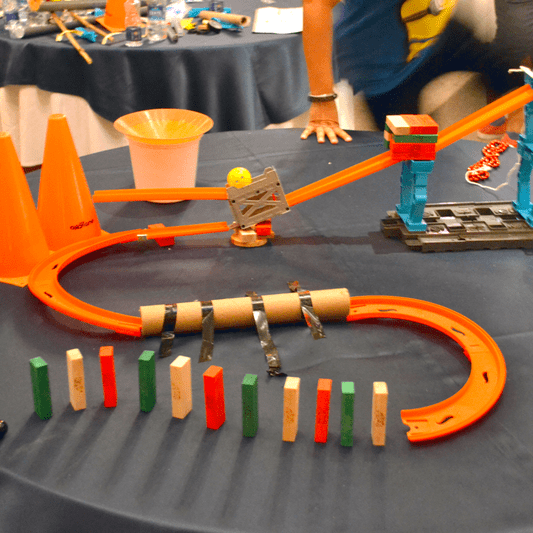
Simple Machines and the Rube Goldberg Challenge
Students research and learn about simple machines and other mechanisms through learning about a Rube Goldberg machine. Student teams design and build their own Rube Goldberg devices that incorporate at least six simple machines. This project is open-ended with much potential for creativity and fun.
Maker Challenge

Solar Water: Heat it Up!
Students explore energy efficiency, focusing on renewable energy, by designing and building flat-plate solar water heaters. They calculate the efficiency of the solar water heaters during initial and final tests and compare the efficiencies to those of models currently sold on the market (requiring ...
Activity

Splash, Pop, Fizz: Rube Goldberg Machines
Refreshed with an understanding of the six simple machines; screw, wedge, pully, incline plane, wheel and axle, and lever, student groups receive materials and an allotted amount of time to act as mechanical engineers to design and create machines that can complete specified tasks.
Activity
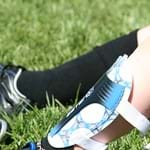
Stop the Flopping: Designing Soccer Shin Guards
Students engineer a working pair of shin guards for soccer or similar contact sport from everyday materials. Since many factors go into the design of a shin guard, students follow the engineering design process to create a prototype.
Maker Challenge

Storing Android Accelerometer Data: App Design
Students work through an online tutorial on MIT's App Inventor to learn how to create Android applications. Using those skills, they create their own applications and use them to collect data from an Android device accelerometer and store that data to databases.
Lesson
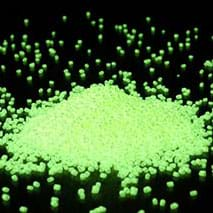
The Glow Show Slime Engineering Challenge
Students learn about the engineering design process and how products may be reinvented to serve new purposes. Working in groups, students design a type of slime. After creating their slime, the teacher turns out the lights and the students see that the slime they made actually glows in the dark!
Maker Challenge

The Lunch-Bot
Students are challenged to design and program Arduino-controlled robots that behave like simple versions of the automated guided vehicles engineers design for real-world applications. Using Arduino microcontroller boards, infrared (IR) sensors, servomotors, attachable wheels and plastic containers (...
Activity

The Power of Food
Students imagine they are stranded on an island and must create the brightest light possible with the meager supplies they have on hand in order to gain the attention of a rescue airplane. In small groups, students create circuits using items in their "survival kits" to create maximum voltage, measu...
Activity

Truss Destruction
Students work within constraints to construct model trusses and then test them to failure as a way to evaluate the relative strength of different truss configurations and construction styles. Within each group, each student builds two exact copies of the team's truss configuration using his/her own ...
Activity

T-Shirt Launcher
Students are challenged to find a way to get school t-shirts up into the stands during sporting events. They work with a real client (if possible, such as a cheerleading squad, booster club or band) to determine the requirements and constraints that would make the project a success, including a budg...
Maker Challenge
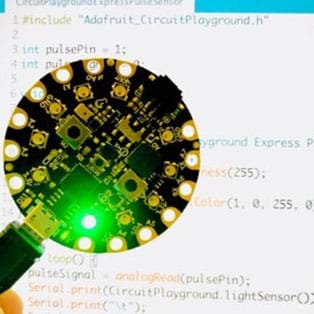
Visualize Your Heartbeat
Biomedical engineers design, create, and test health technology that measure all sorts of physical functions in the body, including heartbeat. Students play the role of biomedical engineers in this activity and create a device that helps visualize heartbeats.
Maker Challenge
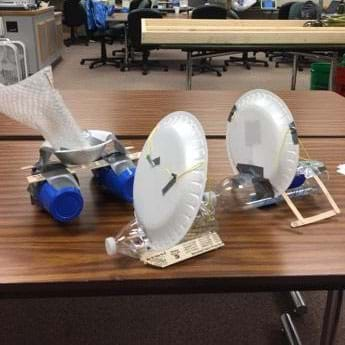
Whatever Floats Your Boat!
Students use a variety of common office and household supplies to design a boat. Their goal: to not only design the fastest boat, but also take into account how much mass or "cargo" the boat can carry, the stability of the boat in the water, the total mass of the boat, boat aesthetics, and how much ...
Maker Challenge

Wind Chimes
Students are challenged to design and build wind chimes using their knowledge of physics and sound waves, and under given constraints such as weight, cost and number of musical notes it must generate.
Activity
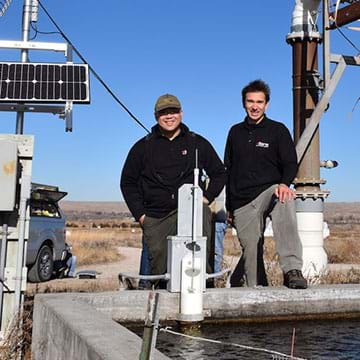
Wirelessly Control Lights and Motors Using XBee Communication!
Students learn how to send signals (such as from buttons or sensors) from one system to another using XBee radio communication modules. By activity end, they are able to control LEDs and motors wirelessly using Arduino microcontrollers and XBee shields. Introduces the concept of the Internet of thin...
Maker Challenge
Engineering Design Process Cycle Video
Source: https://www.teachengineering.org/design/designprocess
Posted by: stitesisfuld.blogspot.com

0 Response to "Engineering Design Process Cycle Video"
Post a Comment